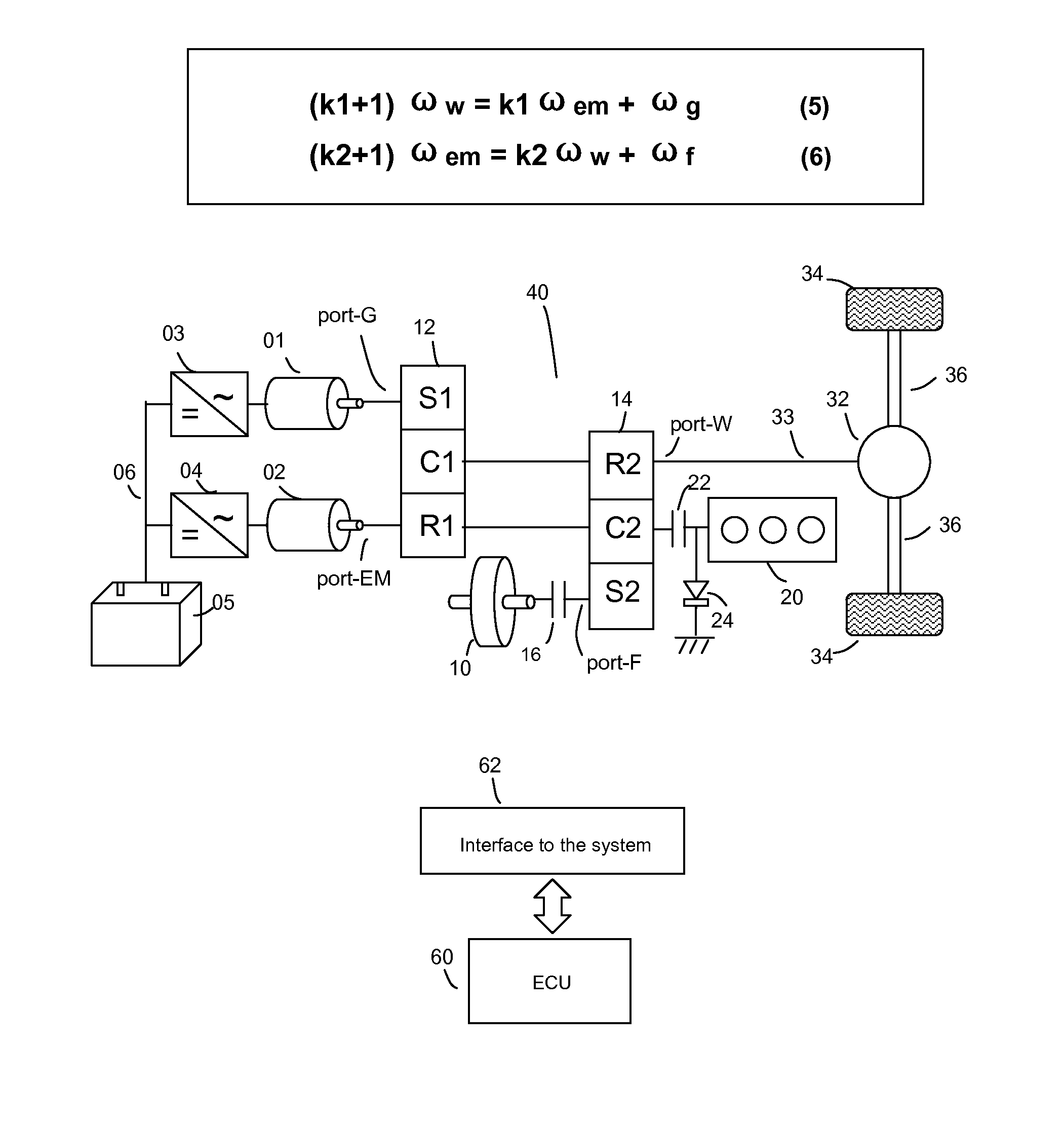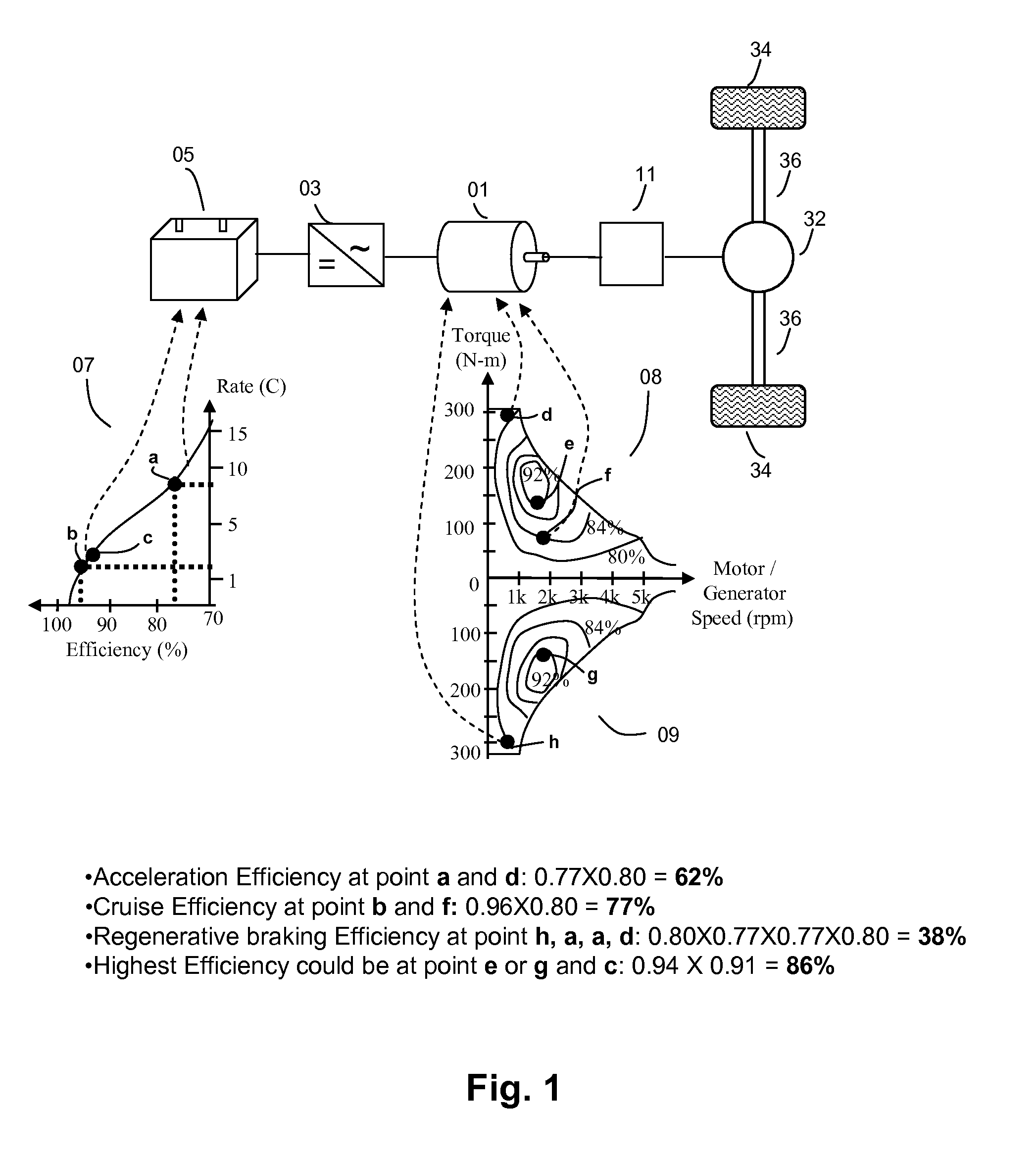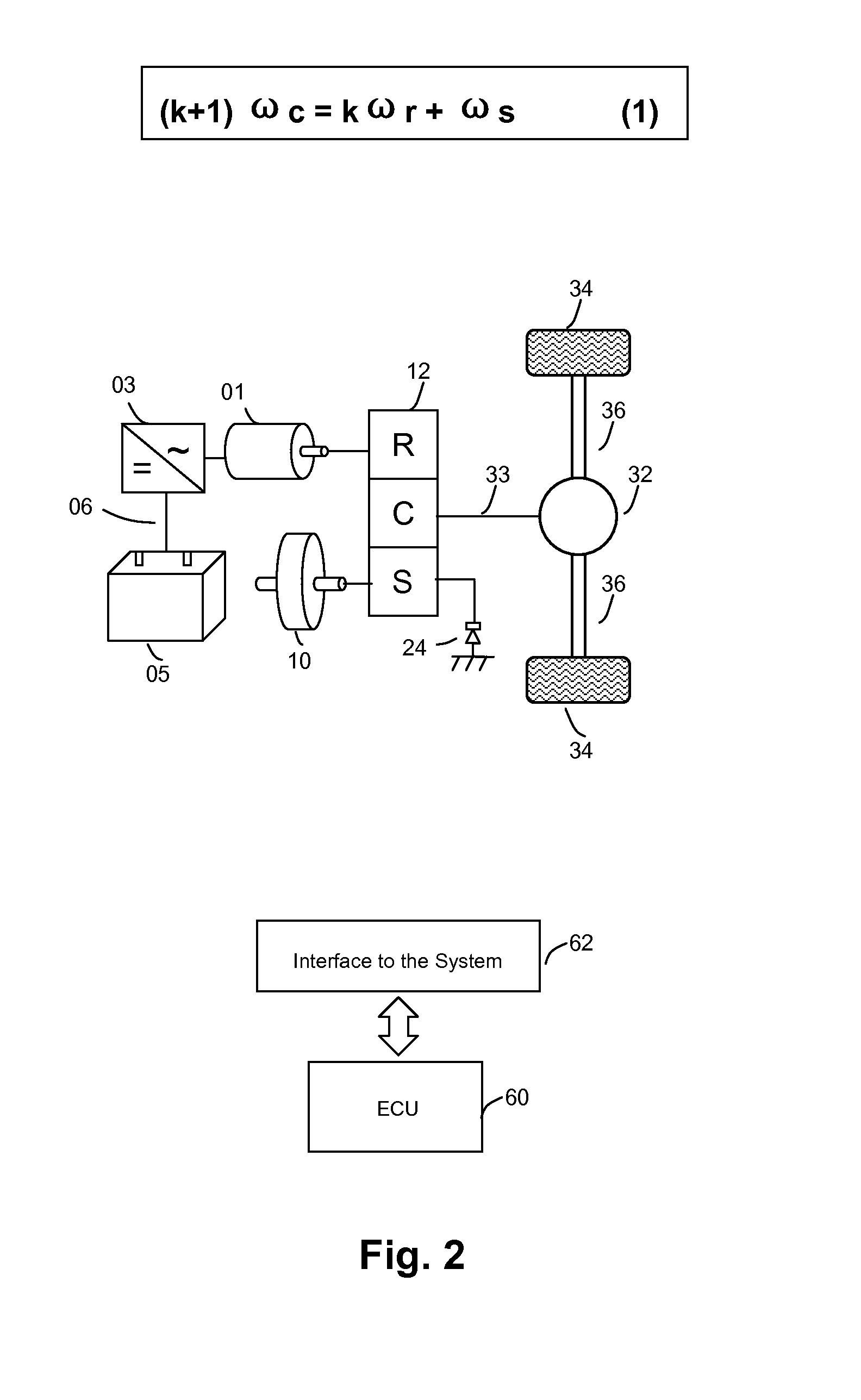Powertrain and method for a kinetic hybrid vehicle
a technology of kinetic hybrid vehicles and powertrains, which is applied in the direction of electric propulsion mounting, transportation and packaging, gearing, etc., can solve the problems of reducing the potential fuel wasting the maximum efficiency potential of the engine, and reducing the efficiency of the vehicle, so as to achieve low energy conversion and conversion losses, the effect of improving fuel economy and reducing emissions
- Summary
- Abstract
- Description
- Claims
- Application Information
AI Technical Summary
Benefits of technology
Problems solved by technology
Method used
Image
Examples
Embodiment Construction
)
[0056]Embodiment(s) of the present invention are described herein with reference to the drawings. In the drawings, like reference numerals represent like elements.
Current Limitations of Electric Vehicle Propulsion Systems
[0057]Although both fuel efficiency and performance are desired in vehicles, they are conflicting goals in the design of a conventional vehicle powered by an internal combustion engine. High performance vehicles are equipped with large engines but suffer from poor efficiency, whereas fuel efficient vehicles lack performance.
[0058]Gas-electric hybrid vehicle technologies have made considerable advances in resolving the deadlock conflict between fuel efficiency and accelerative performance. These hybrid electric vehicles, or HEVs, rely on a downsized engine that works at a better efficiency converting fuel to mechanical power, while a motor, as a secondary mover, supplements power to compensate for a smaller engine's lack of reserve power for acceleration. In additio...
PUM
 Login to View More
Login to View More Abstract
Description
Claims
Application Information
 Login to View More
Login to View More - R&D
- Intellectual Property
- Life Sciences
- Materials
- Tech Scout
- Unparalleled Data Quality
- Higher Quality Content
- 60% Fewer Hallucinations
Browse by: Latest US Patents, China's latest patents, Technical Efficacy Thesaurus, Application Domain, Technology Topic, Popular Technical Reports.
© 2025 PatSnap. All rights reserved.Legal|Privacy policy|Modern Slavery Act Transparency Statement|Sitemap|About US| Contact US: help@patsnap.com



